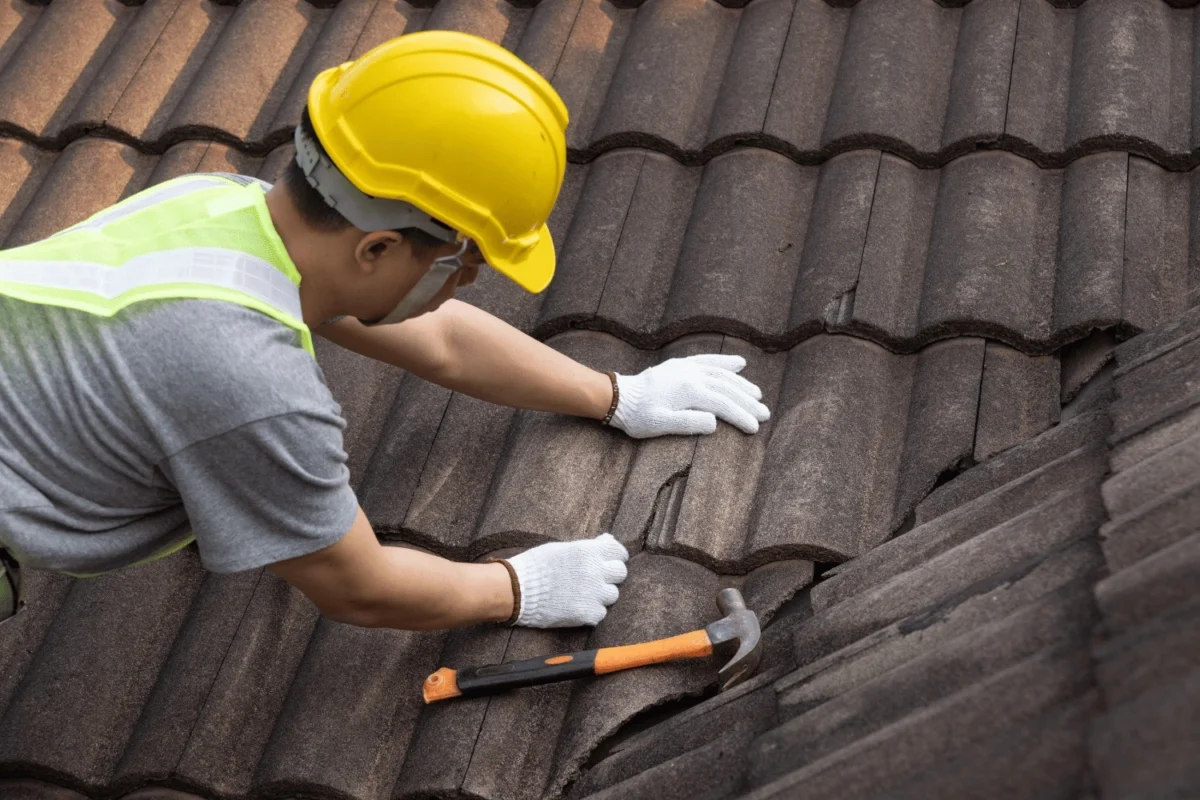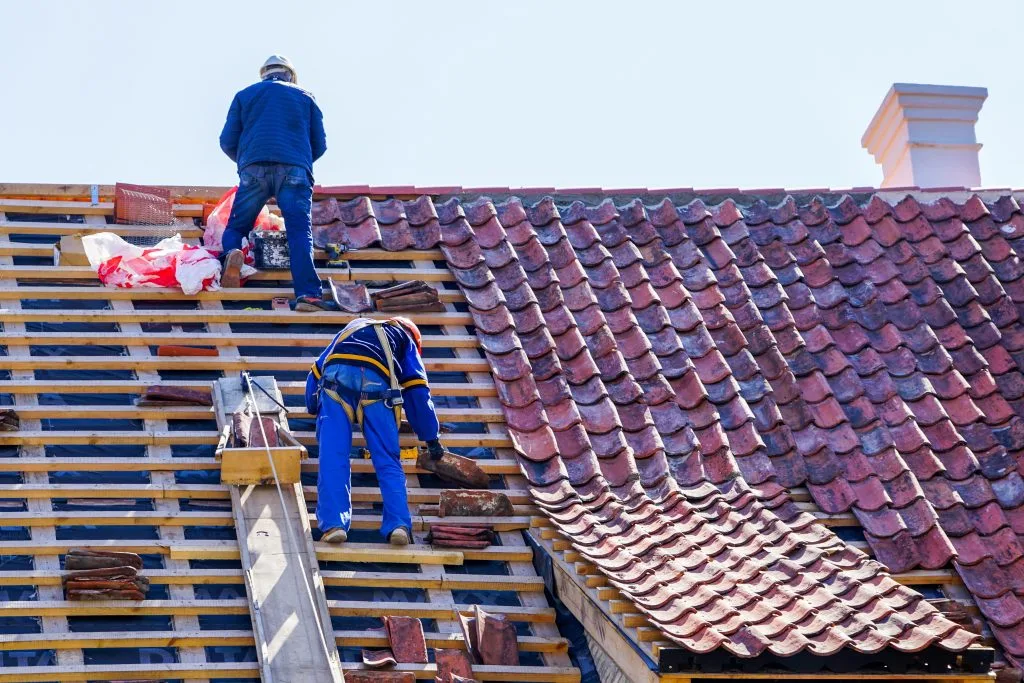As a homeowner, can your roof withstand the unending weather conditions of Sydney? A roof that leaks or is in bad shape must often be replaced, no matter whether you are thinking about selling or fixing the problems with old tiles.
Similarly, if you want to know how to care for your roof, when to replace it, which materials are suitable, what they cost, and other important topics, reading this piece will help you stop unnecessary spending.
What is Roof Replacement?
Roof replacement is simply taking off the old roof materials and installing a completely new system. Roof replacement is quite different from minor repairs; it gives a fresh start, ensures long-term protection, maintains the integrity of the property, and enhances energy efficiency.
Common Reasons for Roof Replacement
Below are a few common reasons for roof replacement:
1. Leaks that persist even after multiple repairs
2. Shingles or tiles that are cracked, missing, or decaying
3. Sagging roof structure
4. Water stains or mold inside the house
5. Storm or hail damage
6. Roof age exceeding 20–25 years
Roofing Materials in Sydney: Choose Wisely
The material you choose affects cost, durability, style, and your roof’s ability to handle Sydney’s climate. Here’s a breakdown of popular roofing materials used across Sydney suburbs:
1. Colorbond Steel
- Lightweight and strong
- Highly resistant to corrosion and bushfires
- Available in a wide range of modern colors
- Excellent thermal efficiency
- Best for modern, low-pitched roofs
2. Terracotta Tiles
- Timeless, earthy appearance
- Great insulation properties
- Resistant to fading and salt corrosion
- Heavier, requiring reinforced support
- Best for traditional and heritage homes
3. Concrete Tiles
- Durable and affordable
- Slightly heavier than metal roofing
- Available in various profiles and colors
- More porous than terracotta (needs sealing)
- Popular in suburban homes
4. Slate Roofing
- Premium natural stone option
- Extremely long-lasting (can exceed 100 years)
- Fire-resistant and eco-friendly
- Expensive and heavy
- Ideal for luxury or heritage properties
- Your choice should balance budget, longevity, aesthetics, and suitability to your roof’s pitch and your area’s climate conditions.
Cost of Roof Replacement in Sydney
Cost varies depending on multiple factors such as roof size, materials used, labor rates, access difficulty, and scope of structural work.
Here are the key cost influencers:
1. Material Costs
Colorbond: Mid-range, great value for durability
Terracotta: Higher-end, excellent for heritage style and insulation
Concrete: Budget-friendly, good performance
Slate: High-end, luxury option with long-term benefits
2. Labor Costs
In Sydney, while the labor fee can range from $60 to $100 per hour, the overall charge can go up if the roof is steeply pitched, the design is complex, or special access solutions like scaffolding or cranes are needed.
3. Additional Expenses
Removal of old roof: Disposal fees may apply
Structural repairs: Especially for sagging beams or damaged decking
Gutter replacement: Often included or offered as an add-on
Council approvals: In some areas, particularly heritage zones
Skylight, ventilation, or solar panel relocation
4. Average Cost Estimate (All-Inclusive)
Small roof replacements can take $10,000 to $15,000, medium roofs from $15,000 to $25,000, and large roofs more than $25,000. It’s helpful to seek well-done quotes and also sort out issues like cleaning, trash disposal, and warranties ahead of time.
Signs It’s Time to Replace Your Roof
Fixing a new roof too late can lead to serious water damage and inflated repair costs.
Here’s how to know it’s time:
1. Frequent Leaks: If your roof has leaked multiple times and patches aren’t holding up, you likely need a full replacement.
2. Visible Sagging: This could signal damage to the roof’s structural integrity and demands immediate attention.
3. Excessive Mold or Moss: One of the serious signs that water is most likely entering the wrong place is when mold grows persistently.
4. Cracked or Missing Tiles/Shingles: Even a few missing pieces can allow water to penetrate and rot the underlayment.
5. High Energy Bills: High energy bills occur when old or poorly insulated roofs allow heat to escape in winter and present in summer.
How to Choose the Right Roofing Contractor
To get the best roof replacement services, working with the best brand is important. However, the criteria to pick one are:
1. Check Licensing: Ensure the contractor is licensed by NSW Fair Trading. Unlicensed work can be voided by insurers or councils.
2. Verify Insurance: The contractor should have both public liability and workers’ compensation insurance to protect you from legal or financial risk.
3. Review Portfolios and Testimonials: Look at their previous roof replacement jobs, especially homes similar to yours.
4. Request Detailed Quotes: Get at least three quotes and make sure they include materials, labor, cleanup, and timeframes.
5. Ask Questions:
- Don’t be shy to ask.
- What type of warranty do you offer?
- Do you handle the disposal of old materials?
- How will the weather affect the project timeline?
- Top-rated contractors in Sydney include companies like Empire Roofing, Ivy Roofing, and The Roofing Professionals Westside.
Legal and Compliance Requirements in Sydney
Depending on your location and the scope of work, some legal requirements may apply:
1. Council Approvals: Especially if changing the roof structure or material
2. Heritage Listings: Restrictions on style and material if your home is heritage-protected
3. Bushfire Attack Level (BAL): Certain areas require fire-resistant materials like Colorbond
4. Stormwater Drainage: Roof replacement must ensure that water runoff is handled correctly
How Long Does a Roof Replacement Take?
The time required depends on your roof size, material type, and weather conditions. Generally:
1. A small roof may take 2–3 days
2. A medium-sized roof may take 3–5 days
3. Large or complex roofs could take a week or more
4. If unexpected damage is discovered (like rotten timber or asbestos), that can extend the timeline.
5. Rain or extreme weather may also delay the process — ensure your roofer has a plan for temporary weather protection.
Energy Efficiency & Roof Replacement in Sydney
A modern roof does more than shield you from the rain — it can help reduce energy bills significantly.
1. Cool Roof Options:
Colorbond roofing has solar-reflective technology that helps regulate indoor temperature and reduce heat transfer.
2. Improved Insulation: Roof replacement brings improvement in insulation to keep heating and cooling loss at a low.
3. Better Ventilation: The use of whirlybirds, vents, or ridge ventilation when undertaking roof replacement can enhance airflow and keep moisture from gathering at bay.
Maintenance Tips for Your New Roof
After investing in a new roof, maintenance is essential to maximize its lifespan:
1. Clean gutters regularly to prevent water pooling and damage
2. Trim overhanging trees to avoid debris buildup or physical damage
3. Inspect the roof annually for signs of wear, cracks, or shifting tiles
3. Address minor issues quickly to avoid escalation
4. Hire professionals for inspections and cleaning — avoid DIY pressure washing unless you’re trained.
Roof replacement in Sydney is often seen as a smart move, due to the weather conditions there, which require quality roofing status. However, it also gives value, comfort, and energy efficiency.
So, this guide has successfully guided you from making the right choice of materials to securing the fitting service provider and obeying all laid down council requirements to enjoy your home.
Frequently Asked Questions (FAQs)
Q1. How long will a new roof last in Sydney?
Colorbond roofs typically last 30–50 years, tiled roofs can exceed 50 years, and slate may last up to 100 years with proper care.
Q2. Is roof replacement tax-deductible?
For owner-occupiers, no. But if you’re replacing a roof on a rental property, you may be eligible for capital works deductions under Australian tax law.
Q3. Does roof replacement help with insulation?
Absolutely. New roofing systems allow you to install or upgrade insulation layers, which helps maintain temperature control and reduce energy bills.
Q4. Are council approvals needed to replace a roof in Sydney?
Though not always, if you have plans to change the roof structure, material, or heritage-listed property, approval will be required, and your contractor can help to go through the process.


